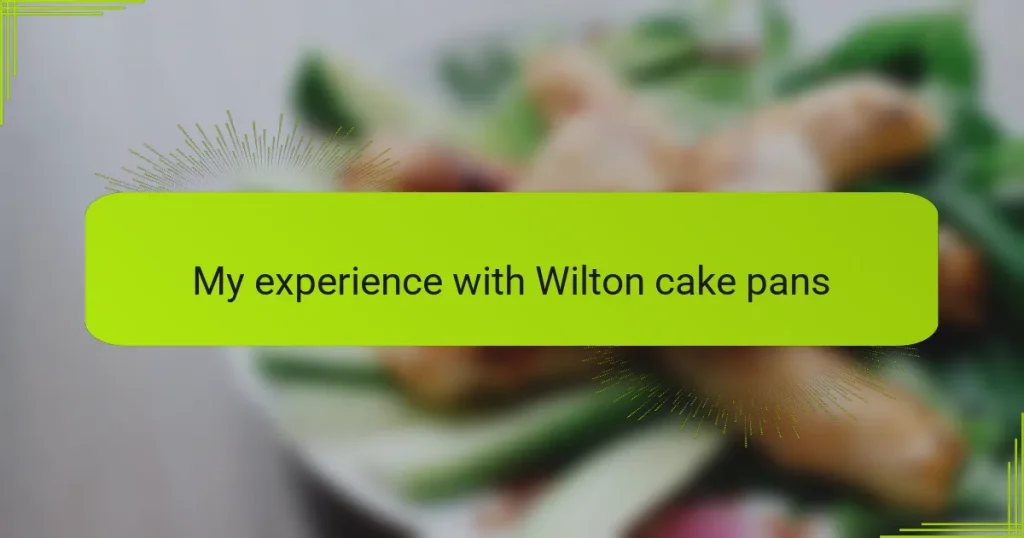Key takeaways
- Wilton cake pans are designed with sturdy construction and non-stick surfaces, enhancing the baking experience and making cake release easier.
- Choosing the right pan size, material, and shape is crucial for achieving even baking results and inspiring creativity in cake design.
- Proper preparation, such as greasing and checking for imperfections, ensures successful cake releases and prevents sticking or uneven baking.
- Maintaining the pans with gentle cleaning methods preserves their performance and longevity, making baking more enjoyable.
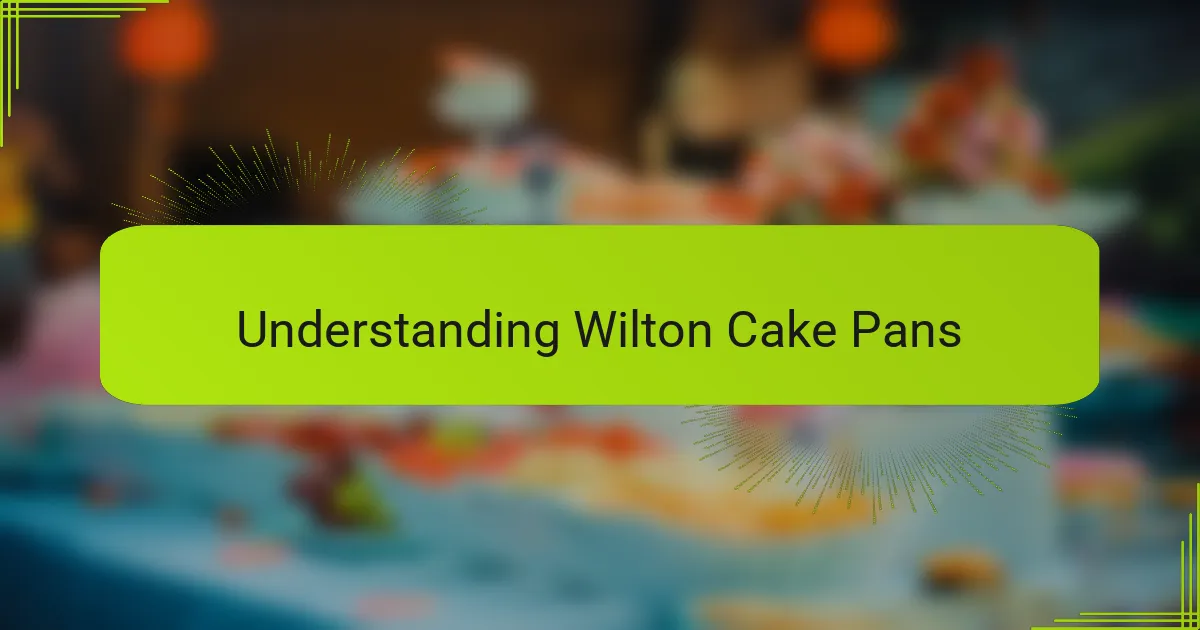
Understanding Wilton Cake Pans
When I first started baking with Wilton cake pans, what struck me was their thoughtful design. The sizes and shapes seemed perfectly suited for both simple and elaborate desserts, making me wonder how such small details could make a big difference in the baking process. Have you ever noticed how the weight and material of a pan affect the evenness of your cake?
Wilton pans are known for their sturdy construction, which I really appreciate after dealing with flimsy alternatives that warp or stick. The non-stick surface? A game-changer in my kitchen, saving me from many frustrating moments of trying to pry out my cakes without damage. This feature alone made me realize how much more enjoyable baking could be when the tools are reliable.
I also found that the variety of shapes—from classic rounds to fun themed pans—unleashed my creativity more than I expected. It’s like having the right canvas inspires better artistry in cake decorating. Would you agree that sometimes the right pan can spark new ideas and make baking feel less like a chore and more like an art form?

Choosing the Right Wilton Pan
Picking the right Wilton pan for your specific dessert can truly transform the baking experience. I learned this the hard way when I first grabbed a pan that was too deep for a delicate sponge cake—resulting in uneven baking and a soggy center. It made me realize how important it is to match the pan size and depth to the recipe’s demands.
Material matters too. I prefer the heavier aluminum Wilton pans because they distribute heat evenly, preventing those dreaded burnt edges. Have you ever noticed how some pans leave you with undercooked spots? That’s usually a sign the pan’s material isn’t up to the task.
Shape is more than just aesthetics in my opinion. Choosing a themed or uniquely shaped Wilton pan often sets the tone for the entire dessert. When I used a flower-shaped pan, it made decorating feel more purposeful, almost like the design flowed naturally from the pan’s form. So, it’s not just about function but also about what inspires you in the kitchen.
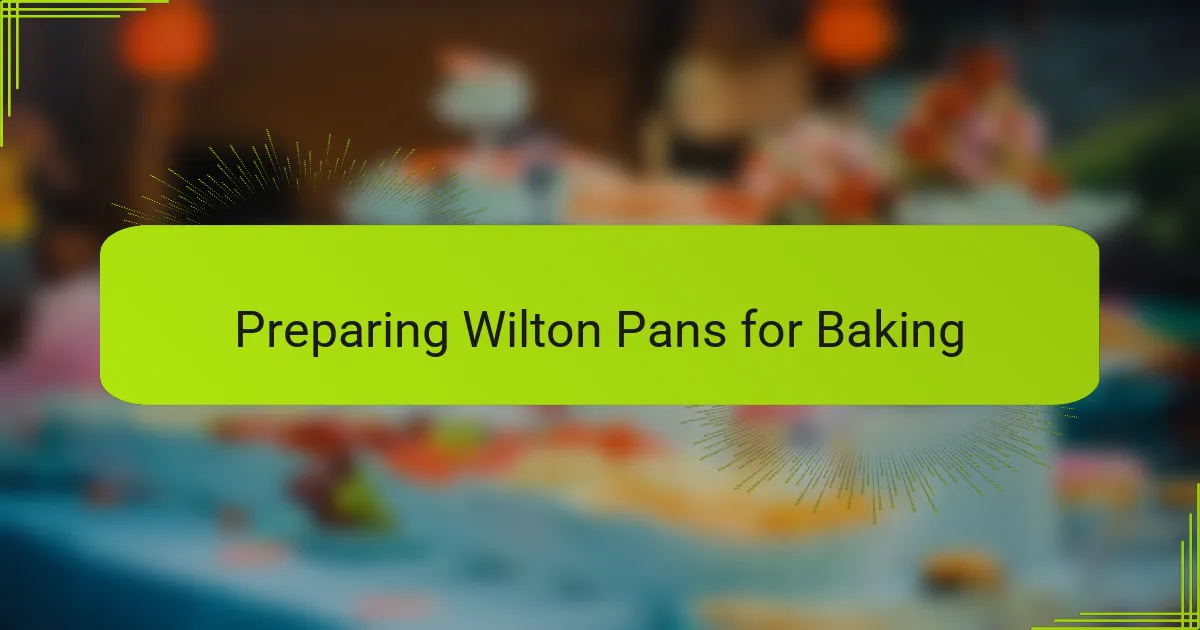
Preparing Wilton Pans for Baking
Preparing Wilton pans for baking is a step I never rush through because it sets the tone for the whole baking process. I usually start by lightly greasing the pans with a bit of butter or shortening, even with the non-stick coating, just to be safe. Have you ever pulled a cake out only to have it stick stubbornly? That little extra care has saved me countless times.
Sometimes, I sprinkle a thin layer of flour after greasing, especially when I bake lighter cakes like sponge or chiffon. It might seem like a small detail, but this habit creates a subtle barrier that helps the cake release perfectly. I’ve noticed that skipping this step can make delicate cakes break apart, and honestly, it’s a bit heartbreaking after all that effort.
I also take a moment to check the pans for any dents or uneven surfaces before pouring in my batter. Wilton pans are sturdy, but a slight imperfection can throw off the baking. From my experience, these small checks make the difference between a smooth, clean release and a cake that sticks or bakes unevenly. Do you find yourself double-checking your equipment too? It’s one of those simple rituals that really pays off.
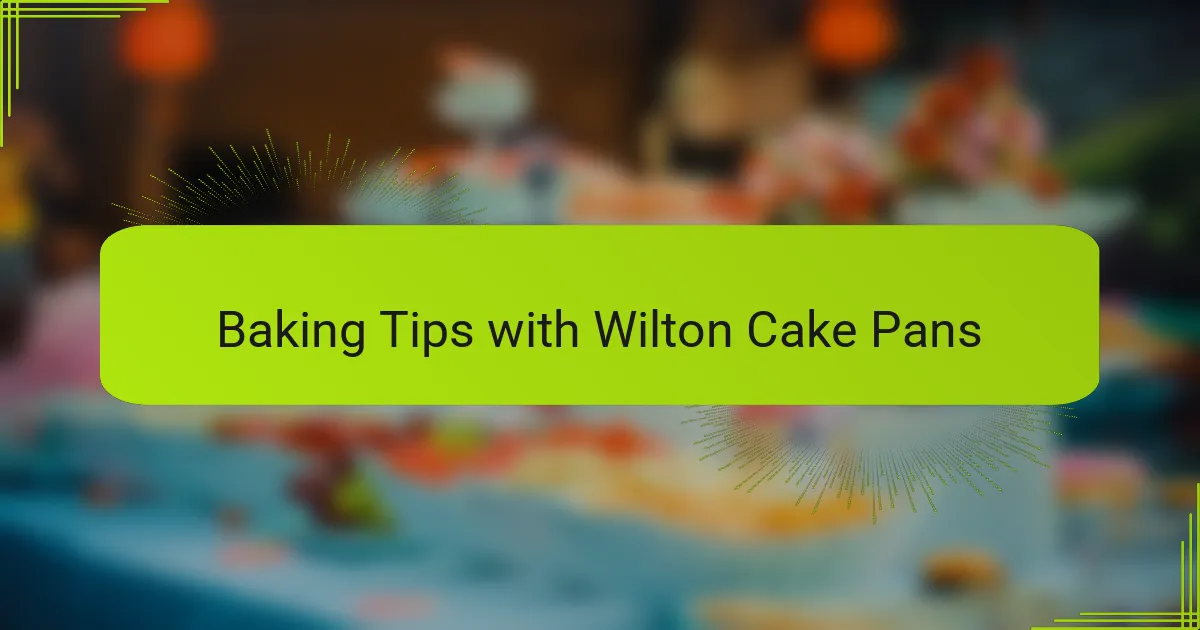
Baking Tips with Wilton Cake Pans
One tip I’ve learned is to avoid overcrowding your oven when baking multiple Wilton pans at once. I used to cram in three pans, thinking it would save time, only to end up with uneven cooking. Have you ever had one cake come out perfect while another was still underdone? Giving each pan enough space lets the heat circulate properly, which makes a huge difference.
I also like to rotate my Wilton pans halfway through baking. It might seem unnecessary, but I noticed my cakes bake more evenly and develop a better crust when I do this. It’s such a simple step that feels like giving your cake a little extra love, don’t you think?
Lastly, don’t underestimate the power of room temperature ingredients when using Wilton pans. I once skipped this step, and my batter reacted oddly in the pan, leading to dense spots. When everything is at the right temperature, the batter flows smoothly and bakes beautifully—just like a well-choreographed dance in your trusty pan. Have you tried warming your eggs or butter before mixing? It’s a game-changer.
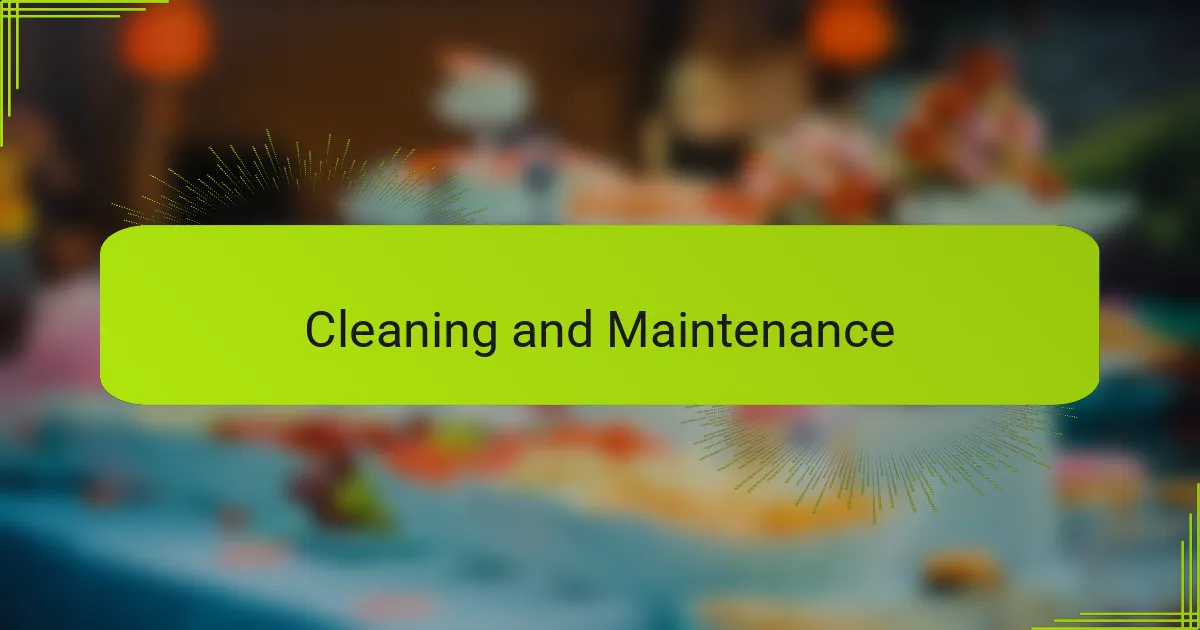
Cleaning and Maintenance
Cleaning my Wilton cake pans has become surprisingly satisfying over time. I make it a point to wash them gently with warm, soapy water immediately after baking. Leaving residue on the pan never ends well—I once made that mistake and struggled for ages to remove stuck-on bits.
I avoid abrasive scrubbers because they can damage the non-stick coating, which I’ve learned is precious for that easy cake release. Instead, I prefer a soft sponge or cloth, sometimes letting the pan soak briefly if crumbs are stubborn. This careful approach has kept my pans looking new and performing well through countless bakes.
Do you ever wonder if oven sprays or harsh cleaners might help? From my experience, they tend to degrade the pan’s surface over time. Sticking to mild cleaning methods not only preserves the pans but also makes the whole baking process smoother and more enjoyable. It’s a small habit that truly pays off in the long run.
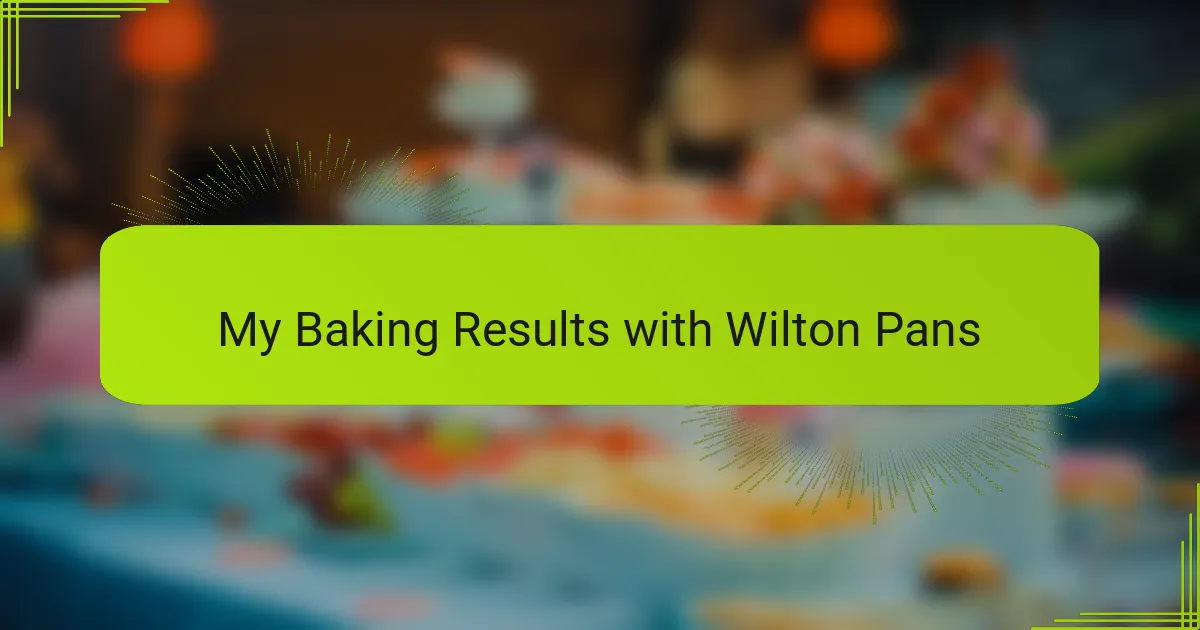
My Baking Results with Wilton Pans
Baking with Wilton pans has genuinely improved my results more than I expected. I remember pulling out my first cake baked in a Wilton pan and being amazed at how evenly it had risen and how smoothly it released from the pan. Have you ever felt that little surge of pride when a cake comes out flawless? That’s exactly what I experienced—and it made me trust these pans more with every bake.
Sometimes, I still marvel at how consistent the baking is, especially compared to my previous pans that gave me uneven edges or stuck layers. One time, I baked a delicate chiffon cake and was nervous if it would hold its shape, but thanks to the Wilton pan’s even heat distribution, it turned out perfectly moist and shaped beautifully. That moment really cemented my faith in these pans as reliable tools.
Of course, no product is without a learning curve, and I did notice that certain recipes require a slight adjustment in baking time when using Wilton pans. But honestly, that’s part of the fun for me—tweaking things until I get that perfect golden crust and tender crumb. Do you find that experimenting with your tools helps you connect better with the baking process? For me, it’s that intimate dance between pan, recipe, and oven that makes baking so rewarding.
